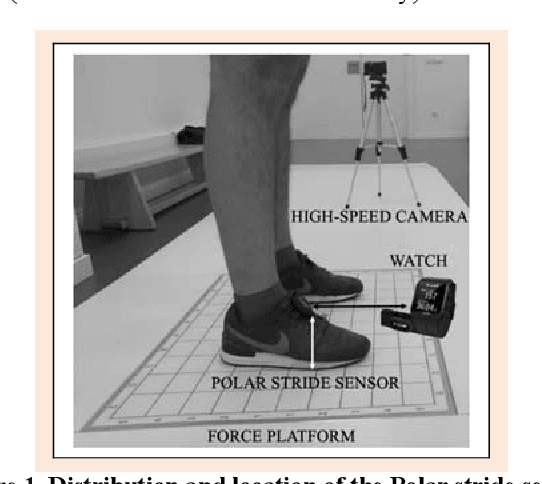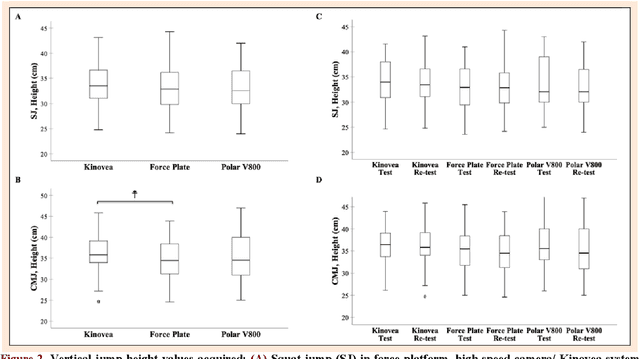Reliability and Validity of the Polar V800 Sports Watch for Estimating Vertical Jump Height
Paper and Code
Mar 28, 2022



This study aimed to assess the reliability and validity of the Polar V800 to measure vertical jump height. Twenty-two physically active healthy men (age: 22.89 +- 4.23 years; body mass: 70.74 +- 8.04 kg; height: 1.74 +- 0.76 m) were recruited for the study. The reliability was evaluated by comparing measurements acquired by the Polar V800 in two identical testing sessions one week apart. Validity was assessed by comparing measurements simultaneously obtained using a force platform (gold standard), high-speed camera and the Polar V800 during squat jump (SJ) and countermovement jump (CMJ) tests. In the test-retest reliability, high intraclass correlation coefficients (ICCs) were observed (mean: 0.90, SJ and CMJ) in the Polar V800. There was no significant systematic bias +- random errors (p > 0.05) between test-retest. Low coefficients of variation (<5%) were detected in both jumps in the Polar V800. In the validity assessment, similar jump height was detected among devices (p > 0.05). There was almost perfect agreement between the Polar V800 compared to a force platform for the SJ and CMJ tests (Mean ICCs = 0.95; no systematic bias +- random errors in SJ mean: -0.38 +- 2.10 cm, p > 0.05). Mean ICC between the Polar V800 versus high-speed camera was 0.91 for the SJ and CMJ tests, however, a significant systematic bias +- random error (0.97 +- 2.60 cm; p = 0.01) was detected in CMJ test. The Polar V800 offers valid, compared to force platform, and reliable information about vertical jump height performance in physically active healthy young men.
 Add to Chrome
Add to Chrome Add to Firefox
Add to Firefox Add to Edge
Add to Edge